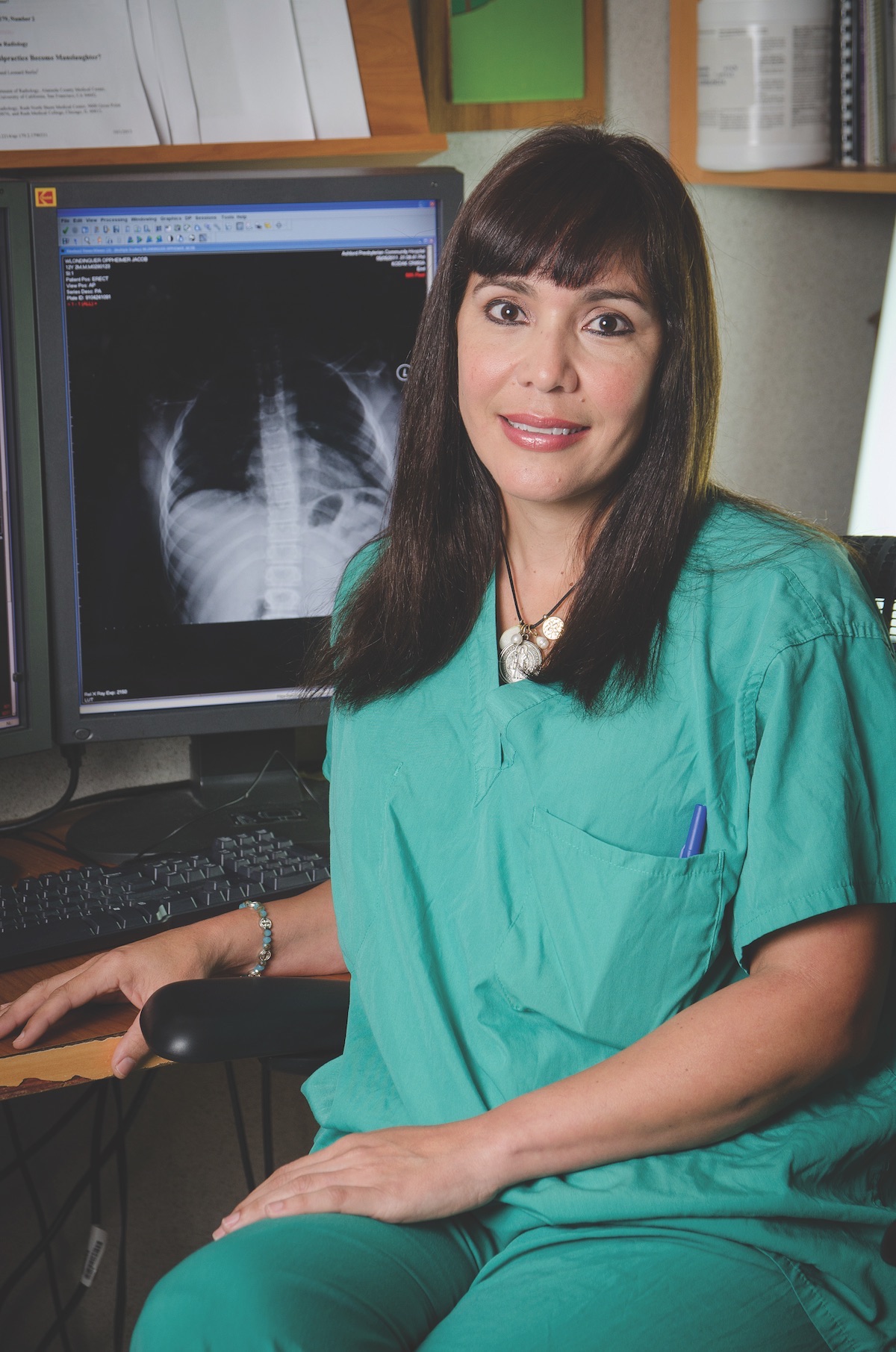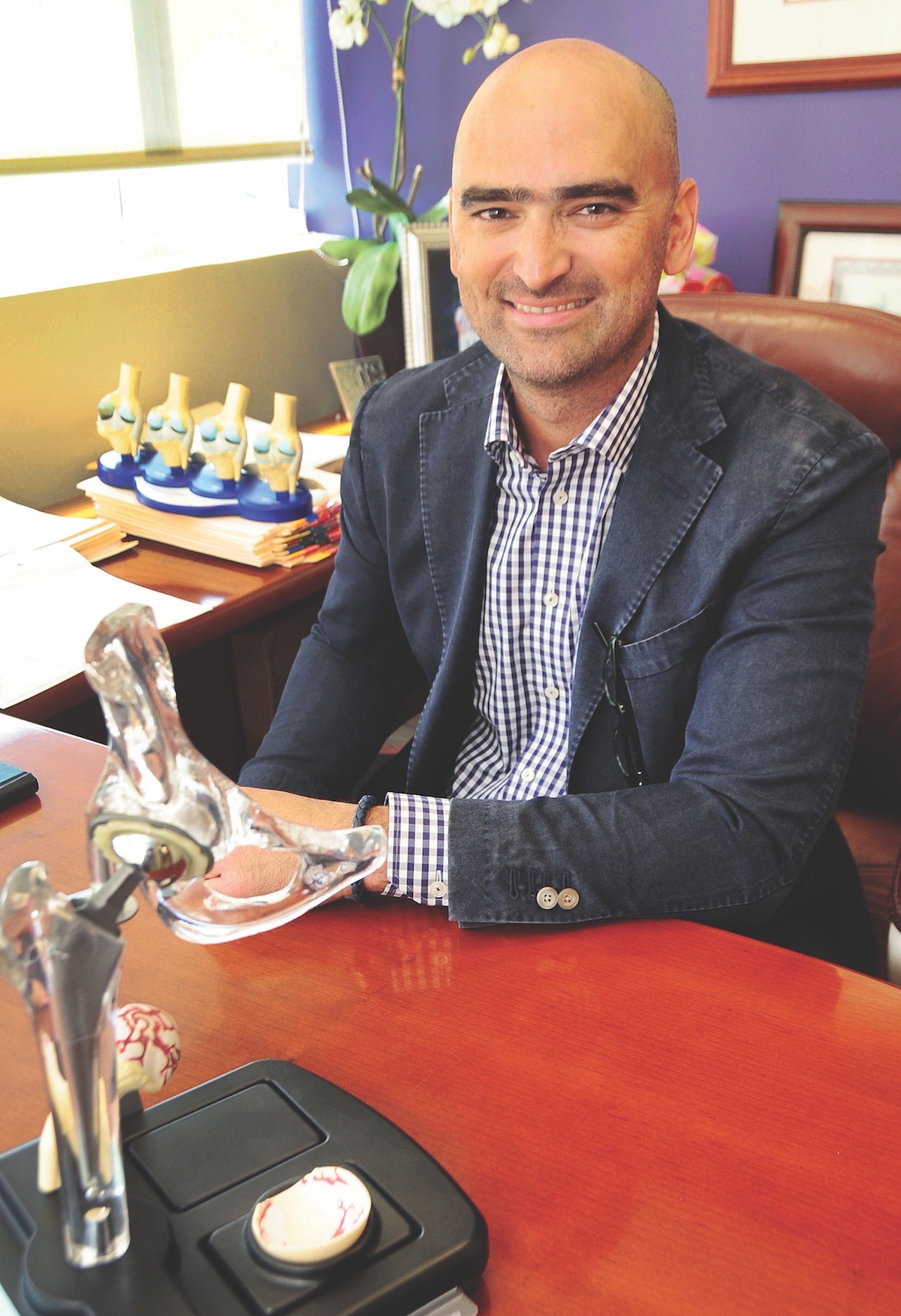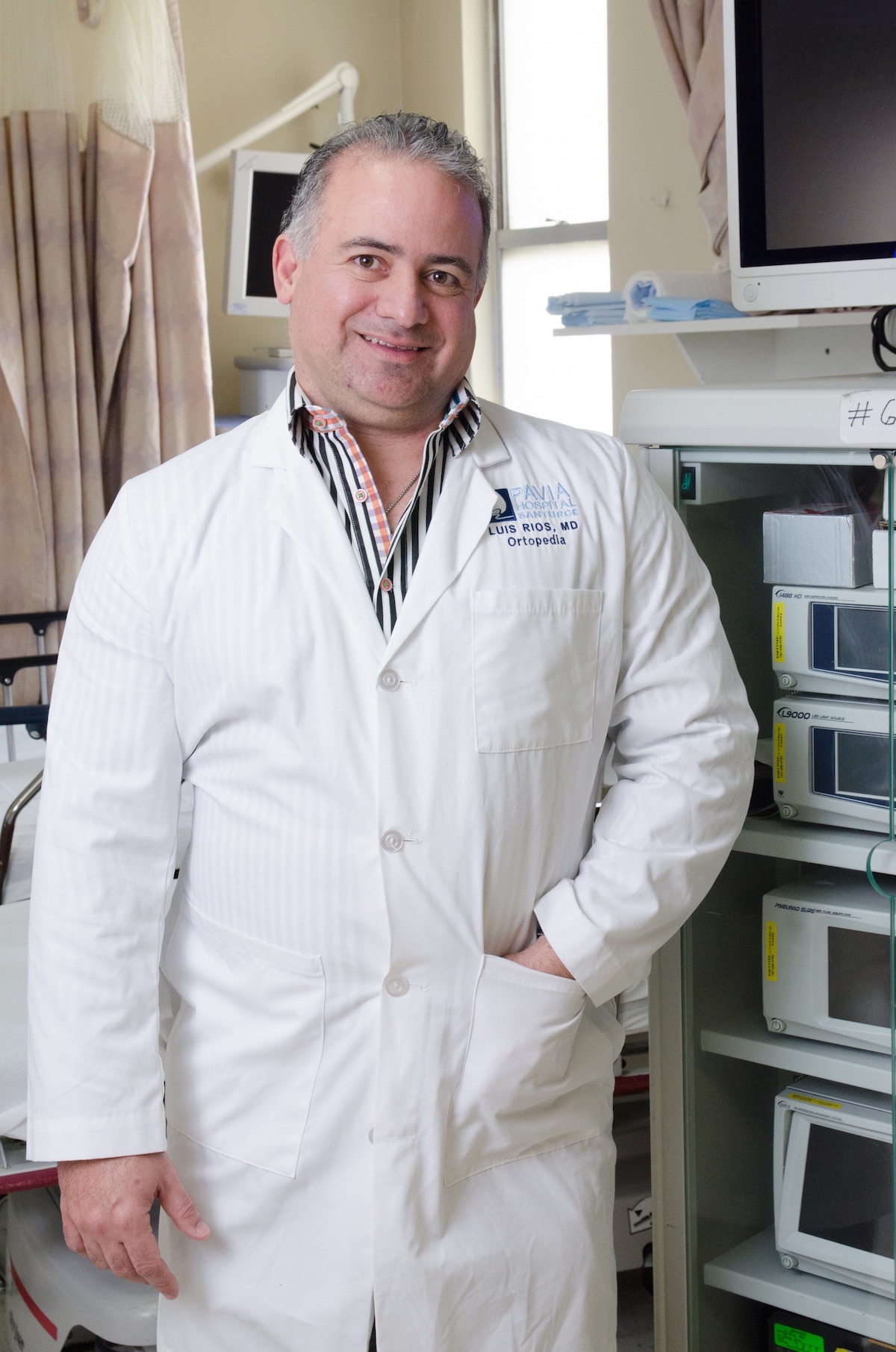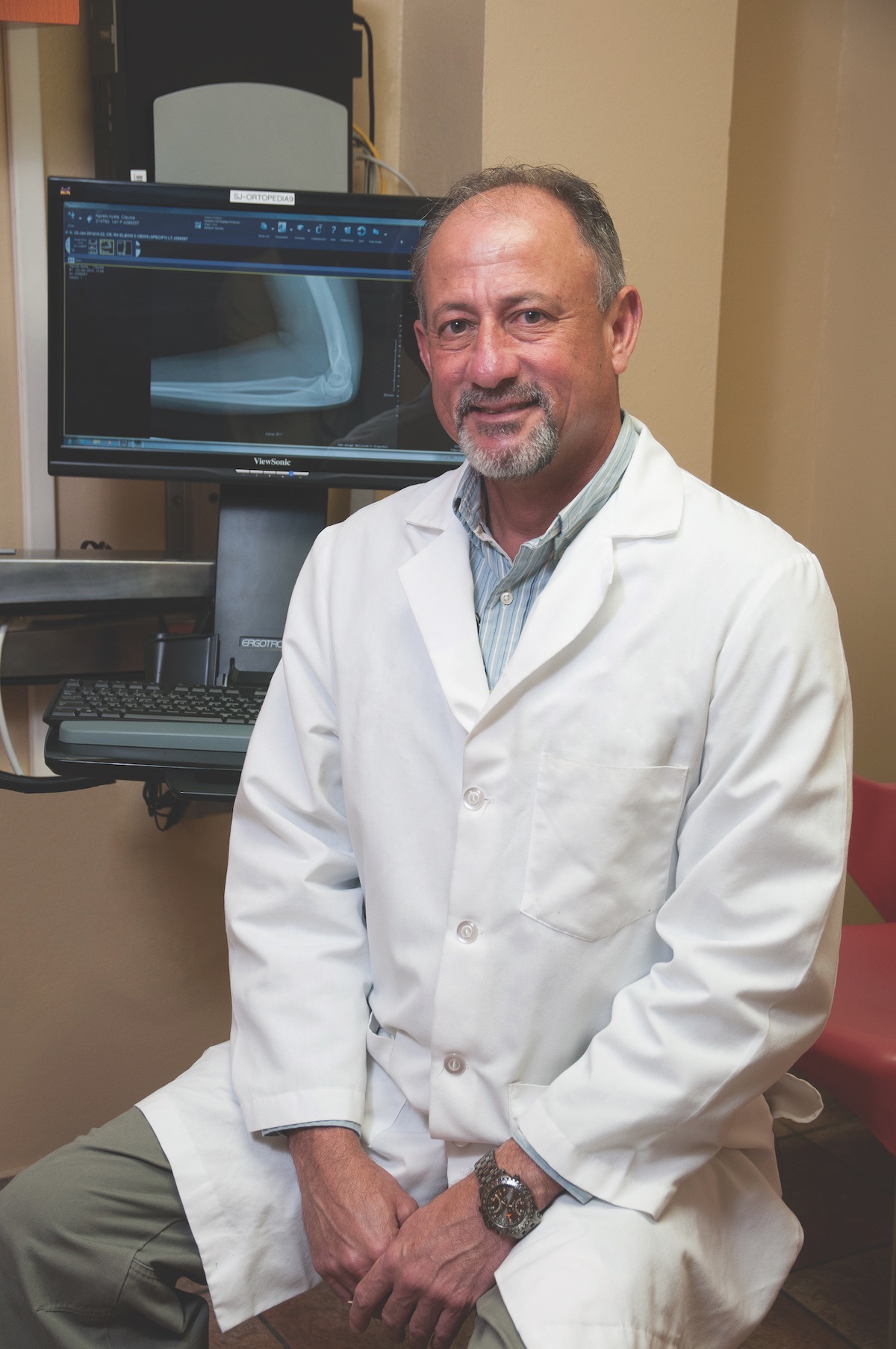Orthopedic specialists make Puerto Rico a medical tourism Nirvana
By Peter Martin
When it comes time to take care of your body, there is no better place for treatment and recuperation than in tropical Puerto Rico.
The island’s lush, balmy environment offers U.S. caliber medical services at much lower costs than you can find on the mainland. That’s one reason why medical tourists are flocking to Puerto Rico, the Caribbean’s hottest medical tourism destination, for all sorts of procedures.
Puerto Rico has a highly developed health care system with excellent hospitals, including state-of-the-art facilities as good as in big U.S. cities, and an elite pool of talented and dedicated U.S. board certified doctors and specialists. One of Puerto Rico’s top specialties is orthopedics, with experts who treat hands, feet, knees, hips, shoulders, and sports injuries.
Puerto Rico may be the best place to recover from knee replacement surgery. In fact, you could be up and moving in two days, out of the hospital by the third day and already deep into the paces of a 10-day doctor-supervised rehabilitation schedule.
“There are processes where the patient takes months and years to recuperate. With orthopedics, rehabilitation is swift,” says Ingrid M. Negron Valentin, a San Juan orthopedic surgeon affiliated with Ashford Presbyterian Community Hospital (locals call it El Presby) and its Global Healthcare program for international medical tourists.
In Puerto Rico you can find some of the very best professionals in this complex medical field. Indeed, there are several rock stars among island orthopedists whose services would be in just as high demand in New York, Los Angeles or Vienna, as they are in San Juan.
Orthopedists practicing in Puerto Rico use the latest instrumentation and apply the newest advances in their field such as per-cutaneous treatment of fractures through smaller incisions and stem cell implants.
Dr. Negron, a 41-year-old surgeon who studied at the University of Puerto Rico (UPR) School of Medicine and specialized in minimally invasive reconstructive surgery at the Mayo Clinic, is using stem cell therapy for some of her cases. Stem cell implants help patients who are poor candidates for surgery or whose conditions, such as tendinitis and tennis elbow don’t respond to treatment.
Injecting amniotic membrane allografts into the shoulders, knees, hips to regenerate tissue can, in some cases, replace the need for surgery, says Negron, who was chief of orthopedics at the VA Caribbean Healthcare System between 2004 and 2007.
“We can offer the same level or better quality of service than anywhere in the U.S.,” said Ricardo Jesus Reina Sanabria, president of the Puerto Rican Society of Orthopedics and Traumatology.
The easy-going and affable Reina is a 44-year old orthopedic surgeon specializing in knee and hip replacements. He trained at Lenox Hill Hospital in New York under world-famous Dr. Chitranjan Ranawat, the co-developer of such implants as the Total Condylar Knee and the PFC Sigma High flexion knee.
Three other Puerto Rico orthopedists trained with the eminent Ranawat, including Manuel Soto Ruiz in Caguas, Norberto Baez in Mayaguez, and Ruben Hernandez in Ponce.
Other prominent names in the orthopedic field are orthopedist Luis Rios Reboyras; hand specialist Jose Santiago Figueroa; foot surgeon Carlos Fraga; sports medicine specialist Mark Emil Trautmann; shoulder surgeons Efrain Deliz and Antonio de La Cruz; spine specialist Yamil Rivera; and pediatric surgeons Pablo Marrero and Humberto Guzman.
Rios Reboyras heads the orthopedic department at Pavia Hospital Santurce and practices at the San Juan Orthopaedic Group with another three doctors: orthopedic surgeon Jose Roberto Fumero, pediatric orthopedist Pablo Marrero and hand specialist Homar Morales.
Santiago Figueroa trained as a surgeon at the UPR School of Medicine and went on to get a sub-specialty in hand surgery at the Hospital for Joint Diseases Orthopedic Institute in New York City. He has 16 years of experience in his field and is affiliated with El Presby and its Global Healthcare program.
This 53-year-old surgeon distinguished himself in 2001 when he became the first orthopedic surgeon in Puerto Rico to perform a wrist replacement in an adult patient with severe arthritis. “The objective of the surgery was to take away the pain and preserve movement,” he said.
Guzman began his practice in 2009 and is already a rising star, treating children with scoliosis, a deformity of the spine, and deformities of the feet, knees and hips.
The 35-year-old surgeon graduated magna cum laude from the UPR School of Medicine, completed his orthopedic surgery residency at University Hospital, and specialized in pediatric orthopedics and scoliosis at Rady Children’s Hospital in San Diego, California.
He is affiliated with Auxilio Mutuo Hospital but also attends to trauma cases in the emergency room of Doctors’ Center Hospital.
Among the orthopedics pioneers is Dr. Jose Suarez Castro, one of the first surgeons to perform arthroscopic knee surgery in Puerto Rico back in the early 80’s.
Today, most orthopedic procedures are performed arthroscopically for shorter recuperation. Knee arthroscopy is the most common operation performed by orthopedic surgeons.
Suarez Castro is today chief of orthopedics at Auxilio Mutuo, which has among the island’s largest orthopedic staffs.
High quality, low costs
Patients traveling to Puerto Rico from the U.S. or other countries to receive medical treatment in orthopedics and other medical areas, such as cosmetic surgery and cardiology can expect to find a highly sophisticated health care establishment.
The island is already familiar to many patients from the Caribbean region and even Latin America, who for years have traveled to the island to access medical services unavailable in their own countries.
The island’s $10 billion health care industry has 9,950 doctors, including orthopedists (60 percent of who practice in San Juan), more than 1,000 pharmacies and close to 800 laboratories. Its 69 hospitals are all joint commission accredited and follow the same federal regulations that ensure the highest standards of care at medical facilities across the 50 states.
As one local hospital executive put it, an endorsement by the Joint Commission on the Accreditation of Healthcare Organizations (JCAHO) is “the biggest stamp of approval there is.”
Most Puerto Rico hospitals are based in the metropolitan area and operate within a very competitive environment which promotes innovation and investment in new services, facilities, and technologies.
One of the factors driving medical tourism into a $100 billion a year industry is demand for quality healthcare at an affordable price. And this is an area where Puerto Rico has a clear advantage. Medical services here are between 40 to 60 percent less expensive than on the mainland.
In orthopedics, cost differentials can add up to significant savings. According to local government figures, a knee replacement, one of the most common orthopedic procedures, costs an average of between $30,000 and $59,000 in the U.S. In Puerto Rico, your bill would be between $12,000 and $16,000.
For a total hip replacement in the U.S., the cost runs between $33,000 and $64,000. In Puerto Rico it’s $14,000 to $18,000.
But there are other advantages too. Traveling to Puerto Rico is easy, with flights and connections from most major American cities. English is spoken here and there is no need for visas or passports; the currency of the land is the American dollar; and choices abound when it comes to accommodations from guest houses and hotels to comfortable, private apartments that can be rented by the week or the month.
And let’s not forget the island’s ideal weather and location. For patients who are getting over orthopedic treatments there is nothing better than water therapy.
Puerto Rico’s advanced medical system positions the island to be an important medical tourism center, a goal the administration of Gov. Alejandro Garcia Padilla is eager to pursue.
Hospitals catering to tourists
Puerto Rico’s leading hospitals have found a way to make it easier for patients to access medical services here.
Hospitals have set up their own medical tourism offices to act as liaisons between patients and hospitals. These offices usually have call centers staffed by bilingual, trained coordinators committed to providing patients the best possible hospital experience.
These liaisons help arrange myriad details such as identifying the doctor or doctors who best fit patients’ needs; coordinate appointments and medical services; secure airplane flights and hotel accommodations at discount rates (thanks to prearranged accords between the hospitals and hotels and airlines); and crunch numbers for costs and insurance coverage.
Typically, patients are met at the airport by hospital personnel and are ferried to and from medical services during their entire stay.
Metro Pavia Health System, which operates a network of 12 hospitals in Puerto Rico making it the largest hospital system on the island with a total of 1,468 beds (it also owns a 146-bed hospital in Miami), has been attracting medical tourists since 1989, but it wasn’t until 1999 that it formalized its efforts by creating an office exclusively dedicated to serving this market. Pavia also has offices in St. Croix and St. Thomas to facilitate the initial contact.
These days Pavia draws some 3,000 international patients. Medical Tourism Director Madeliza Ramirez said the biggest demand is for cardiology and gynecological services with a smaller proportion of patients coming down from the U.S. to seek orthopedic services, primarily knee replacements and arthroscopic procedures.
Service to patients is a priority when you speak to the English-speaking coordinators at Pavia’s call center. Associate Yelitza Vazquez noted how grateful patients are for the assistance they get from the hospital.
A glassed-in VIP lounge, near the reception area, offers a quiet space for patient companions to relax while waiting in between procedures. “We make life easier for patients,” said Ramirez.
HIMA Health is the medical tourism division that Grupo Interamerican Hospital San Pablo (HIMA) set up in 2008. With a network of four hospitals totaling 1,100 beds, HIMA operates two state-of-the-art facilities: on in Caguas, a 40-minute ride from the capital, and the other in Bayamon, 30 minutes away from San Juan. It treats some 3,000 patients from the Caribbean and the U.S. with mainland patients mostly seeking orthopedic treatments, primarily joint replacements (hip and knee), arthroscopic procedures for sports medicine, and spine procedures, said HIMA Health Manager Josephine Vidal.
With a staff of 15 people, including a nurse case manager and four hosts to help patients get around to their appointments, HIMA Health prides in the quality of service it offers its international clientele. Out of 20 to 25 surgeons on staff at the two main hospitals, at least 6 or 7 work exclusively with off-island patients, according to Vidal.
Among these are Enrique Escobar, who specialized in spine surgery at the Twin Cities Spine Center in Minneapolis, MN; the previously mentioned Manuel Soto Ruiz, who trained at Lenox Hill Hospital; and Fernando Rojas, who did his residency in orthopedic surgery at Henry Ford Hospital in Detroit, Michigan.
El Presby’s Global Healthcare was set up in 2010. Coordinator Ricky Collazo says most patients come from the British Virgin Islands but the hospital also gets U.S. patients, including cruise passengers who might have fallen ill or had an accident while on the trip. Demand is primarily for medical evaluations or orthopedic processes, such as knee and shoulder replacements.
Two orthopedic specialists provide exclusive services to medical tourists, which mean that when these patients fly to Puerto Rico they get priority over regular patients. They are the above mentioned hand specialist Dr. Santiago Figueroa and Dr. Negron.
Although medical tourism may seem tailor made for adult patients, younger patients can also benefit, according to Guzman. “It is just as practical for children as it is for adults,” he said.
San Jorge Children’s Hospital is known for its excellent pediatric services. This 150-room facility, based in the heart of San Juan, is number one in the Caribbean in the volume of children’s surgeries. It also has the highest volume of pediatric and adult cosmetic and reconstructive surgeries of any hospital on the island, according to Senior VP of Operations Domingo Cruz.
While hospitals are concentrated in the San Juan metropolitan area, fine medical facilities can also be found in Ponce, Mayaguez, and in smaller towns, such as the Mennonite health system’s main hospital located in Aibonito. This lovely mountain town is called “Puerto Rico’s Switzerland” because of its location 2,401 feet above sea level, making it the highest elevation of any town on the island.
The Aibonito Mennonite General Hospital, which advertises its orthopedic program for hip and knee replacement as one of the best in the Caribbean, attracts patients from all over the island and other Caribbean destinations, many of them drawn by the reputation of star orthopedic surgeon David K. Mehne Hazelwood. Trained at the University of Arizona College of Medicine, Mehne did his residency at Los Angeles County King-Drew Medical Center in Orthopedic Surgery followed by a fellowship at the University of South California. Also on the hospital’s orthopedic faculty are Ariel Chacon Balado, a shoulder and elbow specialist; Dr. Alberto Rivera, a knee, shoulder and sports medicine specialist; and Dr. Jose A. Collazo, a children’s orthopedist.
To better attend its international patients, the Aibonito Mennonite hospital recently underwent a costly rehabilitation to transform 10 semi-private rooms into comfortable private rooms ready to accommodate both patient and his/her companion who also gets included in the meal program, said hospital Administrator Ruben Norat.
The San Lucas Episcopal Hospital in Ponce has an advanced and modern orthopedics department that attends all kinds of cases, including fractures and hip replacements. The department is headed by Dr. Rafael Señeriz Ortiz, certified by the American Board of Orthopedic Surgery and a professor at the Ponce School of Medicine. With 13 years of experience, Dr. Señeriz has expertise in trauma cases, fractures and dislocations, as well as reconstructions and replacements of thighs and extremities. He has vast experience in knee procedures and recently received a 100% evaluation from the hospital’s quality compliance committee, complying with all requisites.
The doctor and his staff are looking to lower the number of trauma cases that are transferred to San Juan for treatment by maintaining and treating patients at the first-rate facility in Ponce.
In Puerto Rico, not only do you get the superior medical treatment at a cost that won’t break your bank account, but you get to enjoy a different cultural environment that is sure to enhance your sense of wellbeing and state of mind, two key factors in any recuperation.
Expect to stay from a few days to two or more weeks, depending on the procedure.
Thanks to the attention that hospitals and their medical tourism offices lavish on their international clients, traveling to Puerto Rico for a medical procedure can turn out to be quite a memorable experience.





